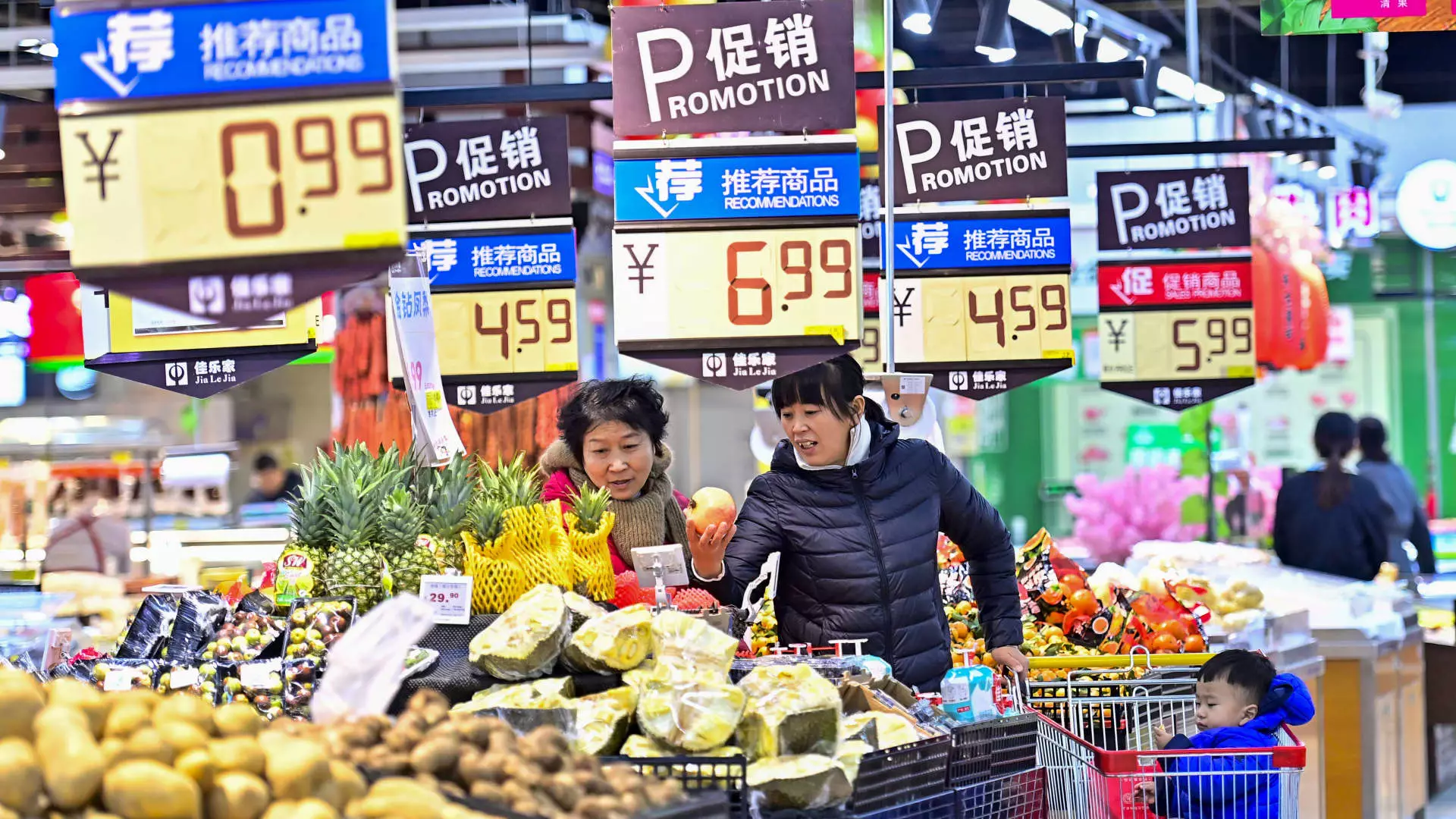In December 2023, China’s consumer price index (CPI) recorded a negligible rise of merely 0.1% year-on-year, according to statistics released by China’s National Bureau of Statistics. This performance raises alarm bells about potential deflationary spirals in the economy. While this figure was in line with the expectations set by financial analysts at Reuters, it marked a downward trend from November’s slightly higher inflation rate of 0.2%. An examination of the more focused core CPI, which strips away the fluctuating food and energy prices, reveals an increase of 0.4%, advancing from the previous month’s 0.3%.
The month-on-month analysis presents a stark picture: the CPI showed a flat performance, contrasting sharply with the 0.6% decline recorded the month before. Notably, food prices played a crucial role in this recent data, declining by 0.6% from November to December—attributed to favorable weather conditions that influenced agriculture. Within the food sector, the prices for fresh vegetables and fruits dipped by 2.4% and 1%, respectively. The pivotal pork prices, carrying substantial weight in the CPI basket, also saw a decline of 2.1% month-on-month. Analysts at ANZ Bank caution that these dips may exert downward pressure on headline CPI in the coming year, particularly as pork prices are projected to remain weak.
While consumer prices demonstrated stagnation, the producer price index (PPI) painted an equally concerning picture. December marked the 27th consecutive month of decreasing wholesale prices, with PPI experiencing a 2.3% year-over-year decline. This figure, though promisingly better than analysts’ forecasts, signals deeper issues within the manufacturing sector. The PPI fell by 0.1% on a monthly basis, a worrying shift from the previous month’s marginal increase, undoubtedly linked to the seasonal halt in infrastructure and real estate initiatives that diminished the demand for essential materials like steel.
These data points contribute to an overarching narrative of continuing weak domestic consumption in China, giving rise to fears of deflation—a scenario where prices consistently drop, leading consumers to postpone spending in anticipation of even lower prices in the future. Despite various stimulus strategies rolled out by the Beijing government since the preceding September—including slashed interest rates and increased bank lending—the effects appear to be tepid at best. Recent efforts, such as the expansion of the consumer trade-in program, have also sparked debate, with economists like Louise Loo questioning their long-term efficacy.
Consumer sentiment is particularly sensitive ahead of the Chinese New Year, a crucial period for increased retail activity. However, consumers are increasingly inclined to seek out substantial discounts, delaying purchases until they perceive a bargain. Shaun Rein, a well-known figure in Chinese market insights, argues that current programs encouraging consumption, while beneficial in theory, do not yield substantial uplift in retail figures. He points out the practical limitation of such programs—how many appliances can a family realistically upgrade?
Conversely, certain metrics hint at a flicker of hope for economic rejuvenation. For instance, manufacturing activity has shown some resilience, with growth noted over the past three months, albeit at a slowing pace in December. Carlos Casanova, a senior economist, acknowledges some positive indicators but also points out the undercurrents of significant challenges, particularly vis-à-vis the troubled property sector and escalating trade tensions with the United States.
As analysts and economists sift through China’s economic data, it becomes evident that the road ahead is riddled with obstacles. The prevailing indicators suggest a sluggish recovery with consumer spending remaining lackluster despite attempts to invigorate the economy. With China’s onshore yuan recently plummeting to a 16-month low against the dollar—further complicated by rising U.S. Treasury yields—the situation warrants close scrutiny. The underlying themes of deflationary pressures and waning consumer confidence must serve as a focal point for both policymakers and analysts moving forward.

Leave a Reply